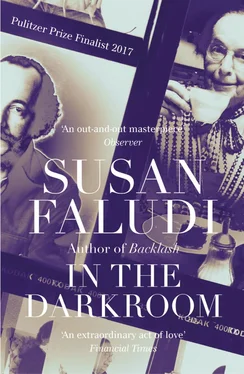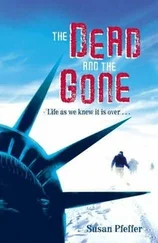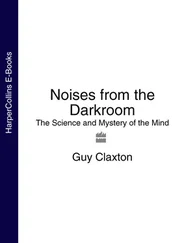1 ...7 8 9 11 12 13 ...22 Another section of books belonged to a genre that was as lifelong a preoccupation of my father’s as opera: fairy tales. Even as a girl, I understood that the puppet theater and the toy-train landscapes my father constructed were only ostensibly for his children. They gratified his craving for storybook fantasy. And the more extravagant the fantasy, the better. Likewise with opera. He hated a production that wasn’t lavishly costumed and staged. The two obsessions were, in fact, conjoined. One of my father’s most treasured childhood memories is of the night when his parents first took him to the Hungarian Royal Opera House. He was nine, and the opera was Hansel and Gretel .
“I wish I still had that book,” my father said, gazing over my shoulder at her impressive assortment of fairy tales. She was referring to a children’s anthology that the first of several nannies had read to Pista in his infancy. The nursemaid was German, and her mother tongue would become her young charge’s first language. “Leather binding, thick pages, gorgeous illustrations,” my father reminisced. “A gem . Whenever I go to a bookstore, I look for it.” Over the years she’d amassed many similar volumes, most featuring the tales of her most beloved storyteller, Hans Christian Andersen. She owned editions of his works in Danish, German, English, and Hungarian. (And could read them all. Like so many educated Hungarians, my father was a polyglot, fluent in five languages, plus Switzerdeutsch.) In 1972, when we took a family vacation to Denmark, my father made repeated pilgrimages to the Little Mermaid statue in Copenhagen’s harbor. I remember him standing for a long time by the seawall, pondering the sculpture of the sea nymph who cut out her tongue and split her tail to become human. I had studied him as he studied the statue, a girl in bronze on a surf-swept rock, her pain-racked limbs tucked beneath a nubile body, her mournful eyes turned longingly toward shore. My father had taken many pictures.
In idle moments on my first visit to Hegyvidék, and on the visits to come, I would take down from the shelf the English version of Hans Christian Andersen’s collected stories and leaf through its pages, repelled and riveted by the stories of mutilation and metamorphosis, dismemberment and resurrection: The vain dancing girl who has her feet amputated to reclaim her virtue. The one-legged tin soldier who falls in love with a ballerina paper cutout and, hurled into a stove, melts into a tiny metal heart. The lonely Jewish servant girl who dreams her whole life of being a Christian—and gets her wish at the resurrection. And most famously, the despised runt of the litter who grows into a regal cygnet. “I shall fly over to them, those royal birds!” says the Ugly Duckling. “It does not matter that one has been born in the hen yard as long as one has lain in a swan’s egg.” And I’d wonder: if the duckling only becomes a swan because he is born one, if the Little Mermaid cleaves her tail only to return to the sea, what kind of transformation were these stories promising?
On still more shelves on the living-room wall kitty-corner to the electronic equipment, stacks of photo albums contained snapshots from my father’s multiple trips to Odense, Andersen’s birthplace. “I took Ilonka there once,” my father said. “I think she was a little bored.” Flipping through them, I was startled to find a familiar townscape: the distinctive step-gabled roof of Vor Frue Kirke (the Church of Our Lady), a GASA produce shop (a Danish market cooperative), and the half-timbered inn of Den Gamle Kro (there’s an inn by that name a block from the Hans Christian Andersen Museum). Had my father reproduced the city of Odense in the train set he’d installed in our playroom? Later, when I inspected the two photos I still had of our childhood model railroad, I admired all the more the particularity of my father’s verisimilitude. The maroon snout of the toy locomotive bore the winged insignia and royal crown of the Danish State Railway.
Above the Odense photo albums, on two upper shelves, a set of figurines paraded: characters from The Wizard of Oz . My father had found them in a store in Manhattan, after my parents divorced and he’d moved back to the city. They were ornately accessorized. Dorothy sported ruby-red shoes and a woven basket, with a detachable Toto peeking out from under a red-and-white-checked cloth. The Tin Man wore a red heart on a chain and clutched a tiny oil can. The Scarecrow spewed tufts of straw, and the Lion displayed a silver-plated medal that read COURAGE. My father had strung wires to the head and limbs of the green-faced Wicked Witch of the West, turning her into a marionette. I paused before the dangling form and gave it a furtive push. The witch bobbled unsteadily on her broom.
My father pulled the drapes aside a few inches so we could slip through a glass door onto the terrace. I’d asked to see the view. The deck ran the length of the house and was lined with concrete flower boxes. Nothing was growing in them, except weeds. “You have to plant geraniums in May,” my father said, by way of explanation. In May, she had been lying in a hospital room in Thailand.
The lawn sloped steeply to the street. Down the center, a path of paving stones was shaded by huge and gnarled chestnut trees, an arboreal specter that put me in mind of Oz’s Haunted Forest (“I’d Turn Back If I Were You …”). Smashed shells and shriveled bits of nut meat littered the steps. From our aerie, you could see down a series of hills to a thickly wooded valley. To the right of the deck was a small orchard my father had planted when she first moved in. She enumerated the varieties: sour cherry, peach, apricot, apple, walnut. “Strange, though,” she said, “this year they bore no fruit.” Her horticultural inventory reminded her of the long-ago resident gardener who had tended the grounds of the Friedman villa in the Buda Hills, the villa where my father had spent every summer as a boy. “The gardener’s family lived in the cottage on our property,” she recalled.
She leaned over the far edge of the deck and pointed to a bungalow a half block below us, the only small structure on the street. “He lives there,” my father said.
“Who?”
“Bader.”
“ Bader? ”
“ Baaader ,” my father enunciated, correcting both my pronunciation and my failure to recognize the name. “Laci Baaader.” Laci, diminutive for László. “The gardener’s son.”
“You were playmates?”
“Haaardly. I was one of those.” Jews, she meant.
“That’s weird,” I said.
“What?”
“The coincidence. His living on your street now.”
My father didn’t think so. “He lives in his father’s house.” The gardener’s cottage that sat on my grandfather’s property. She pointed to one of the residential McMansions a stone’s throw from the Bader cottage. I could just see over the high concrete wall that moated it. It was, she said, the old Friedman villa. “There!”
The news rattled me. I had suspected that my father had purchased Buda Hills real estate as a way of recovering all that the Friedmans had lost. I hadn’t understood that my father had bought a house directly overlooking the scene of the crime.
“Waaall, it waaas there,” she amended. “They remodeled it, into that atrocity.” Nonetheless, some weeks after my father had arrived in Budapest on an exploratory visit in 1989, he’d tried to buy the atrocity. “It wasn’t for sale.” When a house nearby came on the market that fall, he’d paid the asking price at once, $131,250, in cash.
The house proved to be a disaster zone of shoddy and half-finished construction. My father summoned Laci Bader. “He took one look and he said, ‘This is no good!’” The roof was a sieve, the pipes broken, the insulation missing, the aluminum wiring a crazy-quilt death trap. “If you drilled into the wall, you’d get electrocuted.” It took most of a year, and tens of thousands of dollars more, to make the place habitable.
Читать дальше












